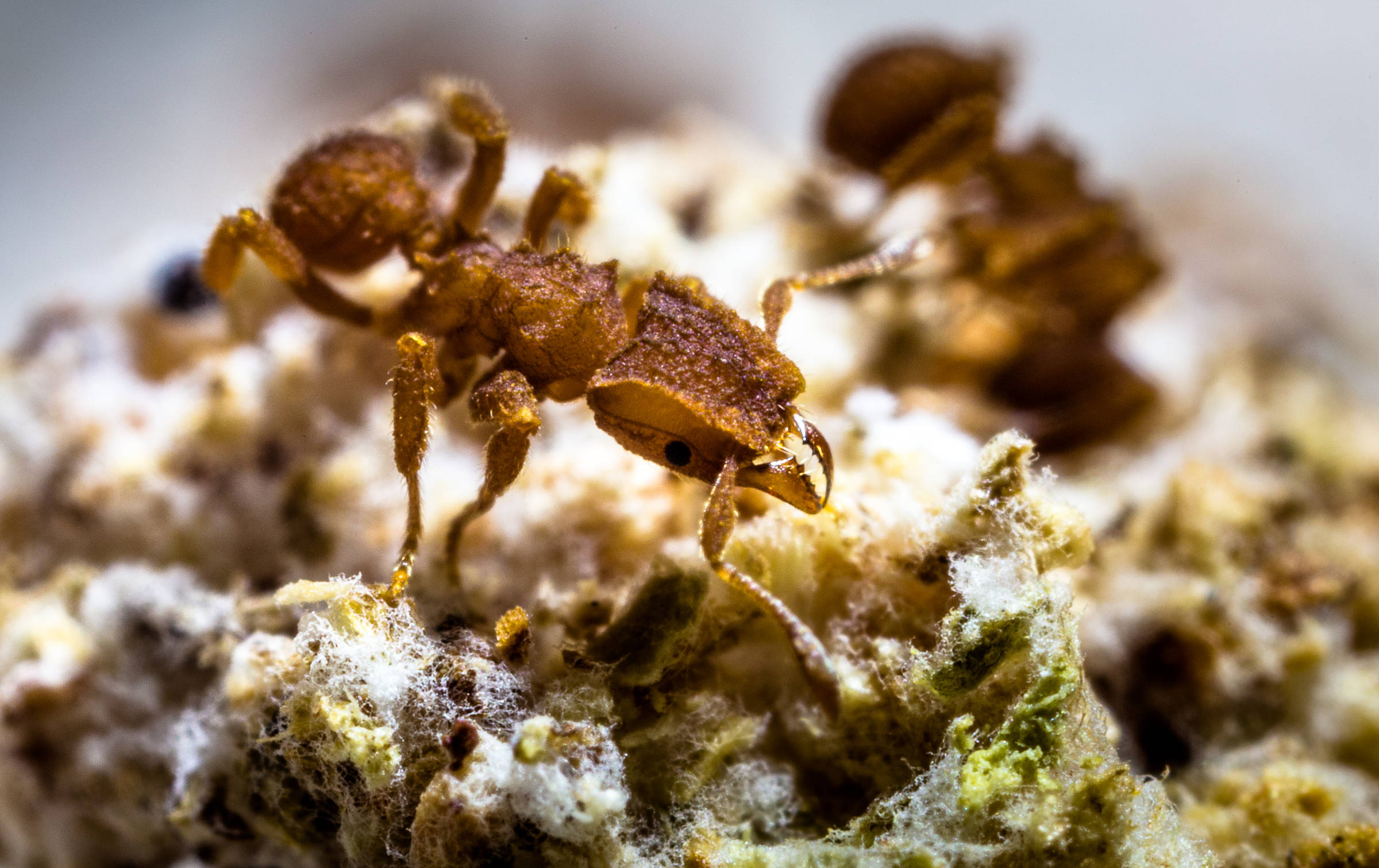66 million years ago, a group of survivors invented agriculture to combat the winter that struck the entire Earth, a long darkness caused by the falling meteorite that wiped out most of the dinosaurs.
The invention of agriculture, of course, did not fall to humans, who were still a long way off at that time, but to ants, as one of them says. He studies An international event with the participation of Brazilians. The work, which was supported by the Fapesp Foundation (Fundação de Amparo à Pesquisa do Estado de São Paulo), reconstructed the details of the “family tree” of hundreds of species of agricultural insects, as well as the fungi they learned. Underground cultivation.
According to the research, the gradual diversification of insects and their fungi, one of the most important examples of coevolution (co-evolution) in the planet’s history, fits well with the beginning during the mass extinction that ended the Ice Age. Age of dinosaurs.
Details of the analysis were published last Thursday (3) in the specialized magazine sciences. The study’s authors include a quartet of researchers associated with the Unesp Institute for Biosciences in Rio Claro, within São Paulo. Pepijn Kooij, André Rodrigues, Quimi Montoya and Mauricio Bacci Júnior signed on to work with other researchers from Brazil and abroad.
Despite the enormous ecological and economic importance of ants’ agriculture – especially in the case of leafhoppers, whose historical impact as an agricultural pest in Brazil has been recorded since at least the 19th century – there is still little data on the relationship between ants. Different types of fungi that they “plant” in the anthill.
This is one of the key gaps filled by the new work, which used more than 2,000 regions of DNA from nearly 500 species of fungi to compile an evolutionary “family album,” matching a similar evolutionary tree to 276 ant species.
It’s a lot, without a doubt. However, a large amount of comparative data is necessary because there is not one type of agriculture practiced by ants, but rather four distinct forms.
All cultivated fungi belong to a group called Agaricales, and agricultural insects belong to groups of ants that are also related to each other. However, there are different levels of complexity in “farming”.
A subset of ants cultivate yeast-like fungi (like the yeast used by humans); There are also those that consume so-called coral fungi (which resemble a miniature version of marine invertebrates); Finally, there is what is called superior cultivation, where highly specialized fungi are used to provide nutrients and the strategy of cutting fresh leaves from plants and using them as a planting substrate. This is the version of the practice adopted by the Savvas.
The fact that the origin of cultivated ant lineages and “cultivated” fungal lineages converged around the time of the disappearance of non-avian dinosaurs (that is, excluding birds, which are also dinosaurs) may have a simple reason: fungi. They do not need sunlight to grow, unlike vegetables.
They just needed organic matter they could decompose, which was plentiful in the post-apocalyptic world of the time. The idea is that ants collect this organic matter in their nests, and the ancestral fungi use their biochemical arsenal to digest it, allowing the insects to feed on the product of this process.
But before that, the relationship between the species had to be determined. According to Pepijn Kooij, the beginning was probably accidental.
“We can imagine that the ants were bringing plant material to eat into their nests, creating a stockpile. As happens in human agriculture, this buildup would attract pests, just as a wheat barn attracts mice,” he adds. “It’s possible that fungi started growing there, and the ants started eating the fungi.” In some cases, things went so well that the insects began spreading the ancient invaders.
The researchers also identified a possible phase of increasing complexity in ant agriculture 27 million years ago, in South America, when more elaborate leafhopper agriculture appeared.
This is a phase of drier climate, with loss of closed forests. As savannas (ancestors of today’s Cerrado and other open areas) increased, the protozoa selected fungi that had previously adapted to growing in the moisture of tropical forests, making them entirely dependent on growth inside anthills.

“Hardcore beer fanatic. Falls down a lot. Professional coffee fan. Music ninja.”


![[VÍDEO] Elton John’s final show in the UK has the crowd moving](https://www.tupi.fm/wp-content/uploads/2023/06/Elton-John-1-690x600.jpg)



More Stories
The Director of Ibict receives the Coordinator of CESU-PI – Brazilian Institute for Information in Science and Technology
A doctor who spreads fake news about breast cancer is registered with the CRM of Minas
The program offers scholarships to women in the field of science and technology